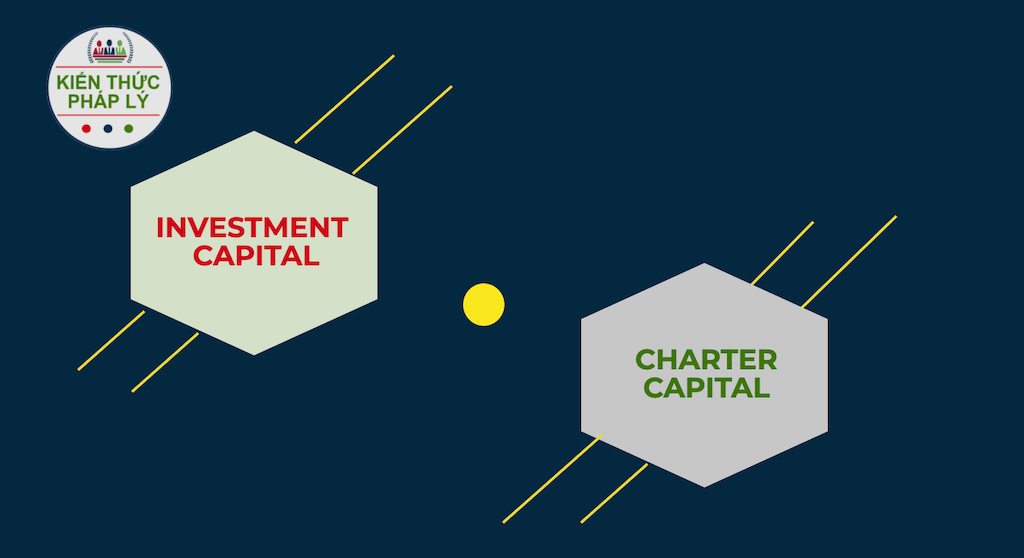In the Vietnamese legal regime, investment capital and charter capital are two completely different legal terms which are often misused by the foreign investor upon their first entry into Vietnam. Such misunderstanding may lead to adverse effects on their investment and return on investment.

The contents of this article are purported for foreign-invested enterprise and foreign investors investing in Vietnam only.
How the laws govern investment capital and charter capital?
The denotation of investment capital is governed under the umbrella of the investment law whereas charter capital is defined in accordance with the enterprise law. Those two legislations are separate but strongly bonded with one and another to, in combination, erect the core legal framework applicable to the investment of the foreign investors.
On the one hand, charter capital, known as paid-up capital, is the total value of assets contributed by the shareholders to the company irrespective of whether such contribution is made in cash, property rights, objects or valuable papers under the Civil Code. Plainly, charter capital either represents the satisfaction of the requirement on minimum legal capital applicable to several business sectors or is employed as the basis to identify the shareholding ratio of the shareholders. Charter capital is not a theoretical capital but it needs to be actually contributed within a limited time period prescribed by the laws (i.e. 90 days as of the establishment of the company).
Investment capital, on the other hand, has a greater scope compared to the charter capital (in consideration to the first project of the foreign investor in Vietnam). Indeed, investment capital practically embodies the charter capital in a vast majority of circumstances. In principle, investment capital comprises of paid-up capital and other capital sources, the latter of which is usually registered as loan capital. Paid-up capital, as a part of the investment capital, can be lower than or equal to the charter capital. There are barely the cases, though still exists in minority, whereby the paid-up capital within the investment capital is greater than the charter capital.
If an FDI operates only one project in Vietnam, the charter capital registered for the FDI would be equal to the paid-up capital registered as part of the investment capital for the project.
The ratio on the components of the investment capital
As illustrated above, investment capital consists of two primary components, which are paid-up capital and loan capital. Paid-up capital, similar to other international acceptable standards, makes up about 10% – 20% of the total investment capital for a project. It is worth noting that there is no common statutory requirement on the proportion of paid-up capital save for a number of circumstances as explicitly required by the laws (i.e. with respect to the real estate project, the paid-up capital must account for at least 15% or 20% of the total investment capital for such a project, subject to the area of land to be used).
The majority of the investment capital is formed by loan facility. This figure is extremely vital for FDI since the registered ratio of loan facility in the total investment capital creates the “room” for calling loans, either from the domestic bank facility or offshore loan. To clarify, a notable number of projects in Vietnam are being funded by offshore loan, which often comes by way of shareholders’ loan or investment fund’s loan. Those facilities, if being the medium or long-term ones, shall be subject to prior registration with the State Bank of Vietnam (SBV) where they will verify whether the “room” is still available for such facilities or not.
For instance, if the registered investment capital of a project is US$40 million and the paid-up capital makes up 20% thereof and the rest of the investment capital is registered to be funded via facilities. The “room” for facilities created therefrom would be US$32 million. If the investor of the project seeks for an offshore facility greater than the allowance space of the “room”, its registration with the SBV shall be rejected.
What adverse effects could be implied from the misunderstanding between the charter capital and investment capital?
It is commonly acknowledged that the term “charter capital” and “investment capital” must not be used interchangeably. If the registration of the charter capital and the investment capital does not reflect the nature of the intention on investment of the foreign investor, it could seriously jeopardize their interests.
At the stage of setting up a company in Vietnam, foreign investors must bear in mind that charter capital reflects their “self-financed capacity” meanwhile investment capital reflects the size of their investment. For charter capital, if it is misused as investment capital, the registered amount would be too high and therefore, the foreign investor shall not be able to fully contribute the same. Failure to contribute the charter capital in full would lead to sizeable problems. Otherwise, for investment capital, if it is misused as charter capital, the foreign investor has itself eliminated its possibility to call for other sources of capital such as loan facilities, which may in turn adversely affect the financial sense of the project.
- CHUẨN MỰC “CẨN TRỌNG” TRONG QUẢN TRỊ DOANH NGHIỆP: NHẬN DIỆN, ĐÁNH GIÁ VÀ GIẢI PHÁP THỰC TIỄN - Tháng 8 16, 2025
- TUÂN THỦ PHÁP LUẬT LAO ĐỘNG CHO DOANH NGHIỆP – CÁC LOẠI BÁO CÁO ĐỊNH KỲ (PHẦN 1) - Tháng 4 9, 2025
- LỰA CHỌN CƠ QUAN GIẢI QUYẾT TRANH CHẤP TRONG GIAO DỊCH MUA BÁN CÔNG TY CÓ LIÊN QUAN ĐẾN BẤT ĐỘNG SẢN - Tháng 1 12, 2025






